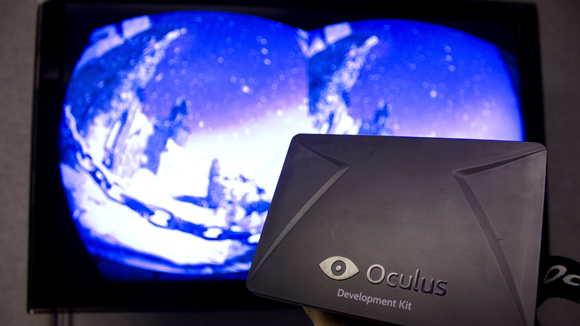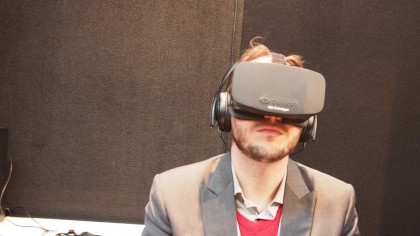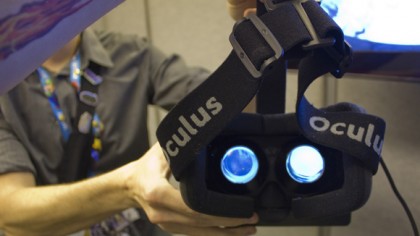The Oculus Rift is going to change gaming, one headset at a time
From Kickstarter to kicking butt, to try the Oculus Rift is to love it

Something is amiss. Not with the Oculus Rift sitting on my face like a high-tech pair of ski goggles for the blind. No, something is amiss with my brain.
I'm looking around the ruins of a virtual castle and as I turn my head, the world moves around me. I look up and see thousands of snowflakes delicately falling to the ground. Instinctively, I reach out to catch one, but something is amiss. They are not real.
It's hard to believe that seconds after putting on the Oculus Rift HD prototype at PAX Australia, my brain would forget it's looking at a small 1080p screen just centimetres from my face.
Well, perhaps forget is the wrong word - I know that I'm looking at a screen, but the effect is so uncanny that my brain anticipates the other senses to acknowledge the view.
The visuals are far from photorealistic. They still look animated, still look like a game. And if I concentrate, I can still make out the pixels of the screen, a fine mesh of black lines that reminds you that you aren't looking at real life.
But none of that matters, because the device on my head is so lightweight and responsive that I can immediately forgive the Oculus Rift's weaknesses.
Even the fact that the HD prototype has't been optimised, meaning there are two black bars on either side of my peripheral vision, doesn't disrupt the experience.
Get daily insight, inspiration and deals in your inbox
Sign up for breaking news, reviews, opinion, top tech deals, and more.
This is going to change the way we play games, make no mistake.

The path to high definition
The story of Oculus Rift is almost as interesting as the experience of wearing one. Built from existing parts in the garage of founder Palmer Luckey, then turned into a Kickstarter phenomenon that raised $US2.4 million in funding, the product has reinvigorated the prospect of a virtual reality-enabled future.
With major publishers Valve, Epic Games and Unity all supporting the platform, the future looks especially bright for the Oculus product.
Initially, the dev kits sent out to Kickstarter backers only featured a 1280 x 800 screen. Because the screen is essentially split into two to create the stereo 3D effect, that meant a relatively low 640 x 800 resolution for each eye.
The new HD prototype, which has been made possible by the development of 1080p screens for smartphones over the past 12 months, fixes the resolution issue.
Running at 60fps and with no lag in the motion tracker of the head unit, the result is an immediate, immersive world that offers a whole new way of experiencing a game.
Kickstarting the immersive game revolution
As someone who can't handle watching 3D at the cinema without being overwhelmed by a sense of nausea, there was definitely a sense of trepidation as the Oculus Rift goggles were wrapped over my head.
Even Sony's Personal 3D viewer failed to deliver a sickness-free experience. But somehow, the Oculus Rift managed to trick my brain sufficiently to allow me to bypass the sense of disorientation, although a wave of dizziness did hit me about five minutes after taking the headset off.
Largely, it has to do with the headset's design and the lack of ambient light leaking in to disrupt you from the view on the screen. A tiny amount of light leaked in through the nose cover and air grills beneath the eyes, but not enough to distract from what you're looking at on screen.

But while vertigo may be enough to dissuade some from using the headset, the possibilities of a truly interactive environment will go a long way to sell the technology.
At PAX Australia, there were a number of indie developers showcasing titles specifically designed for Oculus Rift. What's more, we've already seen the likes of Team Fortress 2, Half Life 2 and Skyrim customised to support the virtual reality headset.